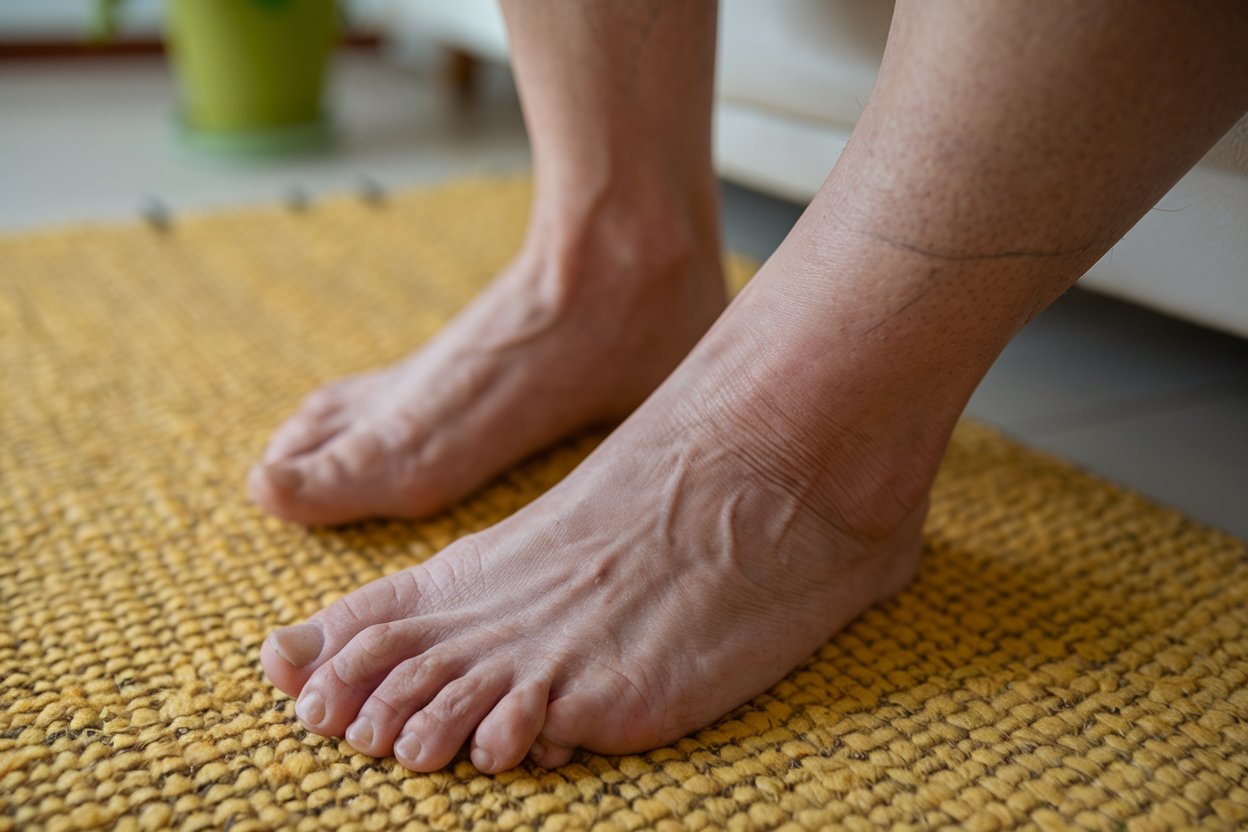Diabetic Foot Pain: Symptoms, Causes, and Treatment

Diabetic foot pain is a common complication in people with diabetes. People with diabetes should pay special attention to their feet, as both nerve damage and poor circulation in the feet can lead to serious foot complications in diabetes. This article reviews the most common symptoms, causes, and treatment options for diabetic feet, and how to care for your feet.
Use this text to share information about your brand with your customers. Describe a product, share announcements, or welcome customers to your store.
What is diabetic foot and why is it important to take care of your feet?
Diabetic foot is a consequence of nerve damage (called neuropathy) and circulatory problems that can occur in people with diabetes. In a person with diabetes, long-term diabetes with high values can increase the risk of both nerve damage and impaired blood circulation, which can lead to serious foot problems if not treated correctly. Diabetic foot is a collective term for the problems with the feet that can occur in connection with diabetes, such as nerve damage in the foot or wounds that are difficult to heal.
People who have had type 1 or type 2 diabetes for a long time are at greater risk of developing complications in their feet. Reduced sensation in the feet can make a person with diabetes not notice injuries and wounds, which, combined with difficulty healing, can lead to chronic wounds and, in the worst case, amputation.
Common symptoms of diabetic feet to watch out for
Common symptoms include:
- Numbness and tingling in the feet
- Burning sensation in both feet
- Pain in the feet and legs
- Feeling of walking on pillows
- Reduced sensation of pain, heat and cold
- Dry skin on the feet which can lead to cracks
- Calluses and deformities, especially around the big toe
- Loss of sensation where you don't feel if you have injured your foot
- Redness or redness that does not go away
- Hard-to-heal wounds on the feet
A common symptom is burning feet , which may indicate nerve damage and should be taken seriously.
Causes of ulcers and calluses in people with diabetes
Diabetic foot problems are mainly caused by:
- High blood sugar over a long period of time that damages the nerves
- Damage to the nerves (peripheral neuropathy) which causes reduced sensation in the feet
- Impaired blood circulation in the feet due to narrowing of the blood vessels
- Changes in the structure of the foot due to nerve damage
- Increases the risk of both ischemic ulcers (due to reduced blood circulation) and neuropathic ulcers
- Smoking, which further impairs blood circulation and increases the risk of foot complications
- Inappropriate shoes that restrict blood circulation or cause chafing
- Walking barefoot, which increases the risk of undetected injuries
These factors can also increase the risk of polyneuropathy of the feet , a common condition in diabetics.
Diagnosis and treatment of foot ulcers and neuropathy in diabetes
| Diagnosmetod | Behandlingsalternativ | Fördelar med SkoKomforten™ |
|---|---|---|
| Fysisk undersökning | God blodsockerkontroll | Avancerat stöd för fötterna |
| Känseltester | Regelbunden fotvård | Lindrar tryck och smärta |
| Cirkulationskontroll | Anpassade skor och inlägg | Förbättrar fotens position |
| Nervledningstest | Medicinsk behandling vid behov | Ökar komforten vid gång |
| Fotundersökningar av fotterapeut | Egenvård av fötterna | Minskar risken för nytt sår |

SkoKomforten™ – support for feet with reduced sensation and blood circulation
SkoKomforten™ from Komforten is a specially designed shoe insert that offers several benefits for people with diabetic foot problems:
- Advanced support and relief for feet living with diabetes
- Helps distribute pressure evenly across the foot, reducing the risk of calluses
- Reduces the risk of chafing and pressure points that can develop into foot ulcers
- Improves foot position and stability, relieving pressure on sensitive areas
- Increases walking and standing comfort for people with diabetes
- Designed to fit into shoes without restricting blood circulation
- Helps to take care of your feet preventively
SkoKomforten™ is specially developed with the unique challenges that diabetics face when it comes to foot health in mind and can be an important part of how to take care of your feet when you have diabetes.
Use this text to share information about your brand with your customers. Describe a product, share announcements, or welcome customers to your store.
Conclusion: Prevent serious foot problems with proper care and self-care
Diabetic foot problems are a serious complication that requires careful monitoring and treatment. By combining good blood sugar control, regular foot care, and the use of supportive devices such as SkoKomforten™, many people with diabetes can effectively prevent or manage foot problems. It is important to consult a doctor or podiatrist for an individual assessment and treatment plan.
For people with diabetes, it is crucial to take care of their feet every day. Keeping blood sugar under control, inspecting their feet daily, and wearing the right shoes with supportive inserts significantly reduces the risk of serious foot complications.
Frequently Asked Questions (FAQ)
How often should a diabetic examine their feet?
Daily inspection is recommended to detect any problems early. Feel free to use a mirror to see the underside of your feet or ask someone else for help if you have difficulty seeing properly.
Can diabetic foot problems be prevented?
Yes, through good blood sugar control, regular foot care and the use of appropriate shoes and inserts. Avoiding smoking is also important as it further impairs blood circulation. People with diabetes should be especially careful about taking care of their feet.
How effective are specially designed shoe inserts like SkoKomforten™?
They can be very effective in reducing pressure on the feet and preventing ulcers, but should be used as part of an overall treatment plan. For many diabetics, custom-made inserts have proven to be crucial in avoiding recurring foot ulcers.
When should I seek medical attention for my diabetic foot problems?
Seek immediate medical attention if you notice any wounds, infections, or noticeable changes in your feet. Even minor changes such as redness that doesn't go away, cracks in the skin, or a new sore should be examined by a healthcare professional, as foot problems in a person with diabetes can get worse quickly.
Can I use SkoKomforten™ in all types of shoes?
The Shoe Comfort™ is designed to fit most shoes, but it is best to consult a podiatrist for personal advice. It is important that the shoes have enough room for both the foot and the insole without squeezing, as tight shoes can impair blood circulation and cause chafing.

